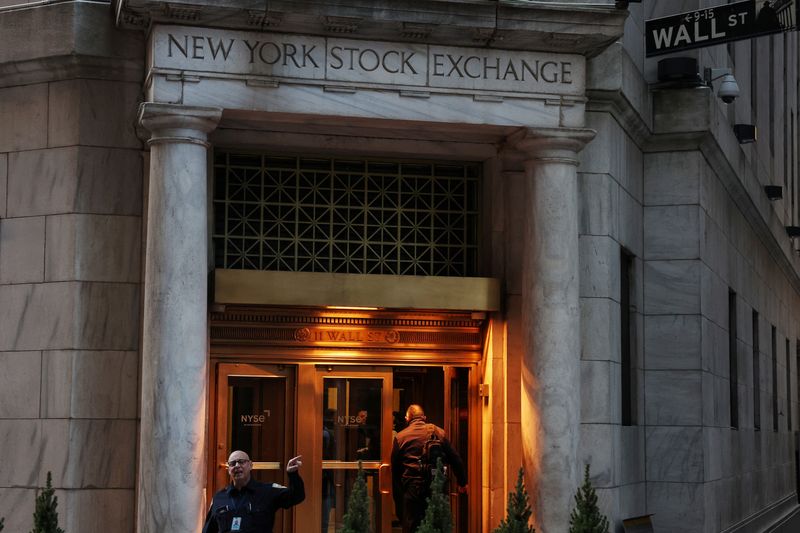
By Mike Dolan
LONDON (Reuters) – What matters in U.S. and global markets today
By Mike Dolan, Editor-At-Large, Financial Industry and Financial Markets
The darkest U.S. consumer confidence outlook in 12 years is sobering, to say the least, but the big question for investors is whether consumers actually rein in spending to match their apparent gloom.
Today, I’ll discuss this, give you an update on what else is happening in markets and then take a look at how much of next week’s potential U.S. tariff sweep is being priced into currency markets.
Today’s Market Minute
* The European Union’s trade commissioner Maros Sefcovic met with U.S. President Donald Trump’s top trade officials on Tuesday to try to avoid steep U.S. tariffs on EU goods next week.
* The United States reached separate deals on Tuesday with Ukraine and Russia to pause their attacks at sea and against energy targets, with Washington agreeing to push to lift some sanctions against Moscow.
* British finance minister Rachel Reeves is expected to announce cuts to her spending plans on Wednesday in a bid to reassure investors that she can be trusted to fix the public finances as growth falters.
* The Bank of Japan must raise interest rates if persistent increases in food costs lead to broad-based inflation, Governor Kazuo Ueda said on Wednesday.
* China wields significant policy room to stimulate its economy this year while some reform is needed to boost consumption, Huang Yiping, an advisor to China’s central bank, said on Wednesday.
Consumer gloom or feint?
With the fog thickening over next week’s big U.S. tariff announcement, financial markets are mostly in a holding pattern as the final week of a volatile first quarter limps to a close.
But the jury is still out on how the real economy is absorbing the prospect of a global trade war.
On Tuesday, the Conference Board’s March consumer survey more than matched the worrying University of Michigan’s version for this month. Overall sentiment dropped to its lowest since 2021, and short-term expectations came in at their weakest since 2013.
The latter reading – which reflects the short-term outlook for income, business, and labor market conditions – is typically consistent with a wider economic downturn.
But like so many economic signals of late, this one wasn’t entirely negative. The so-called labor market differential, derived from data on respondents’ views on whether jobs are plentiful or hard to get, actually ticked up, indicating a still-robust employment picture.
Markets now have to wait to see whether hard data on actual spending shows a pullback commensurate with the drop in confidence. Investors have taken something of a jaundiced view of surveys recently because the results have not yet been matched by real world activity.
